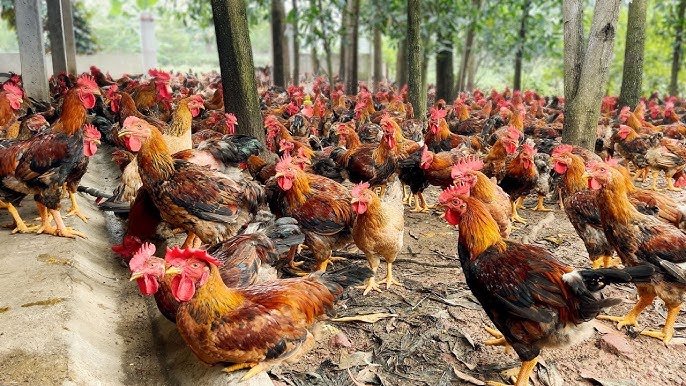Antimicrobial resistance (AMR) is a multi-sectoral problem that is spreading through farms, food systems, and the environment. To fight AMR, global action is needed, supported by coordinated national efforts and local community involvement, especially among farmers and food producers.
In Vietnam, a new program is helping farmers raise healthier animals while using fewer antibiotics.
New model to support change
To support responsible antimicrobial use in animal farming, Vietnam’s Department of Animal Health and Production partnered with FAO Vietnam. With funding support from the UK’s Fleming Fund, they launched a new program called the Farmer School Community (FSC) initiative, based on the Farmer Field School (FFS) model.
The FSC model uses a two-fold approach:
- Build farmer groups centered on a common production system to create a community and environment that fosters knowledge sharing and learning.
- Bring in experts to teach better farming methods and track antimicrobial use.
One of the program’s biggest goals is to collect detailed data about antimicrobial use (AMU). This data will help improve agricultural practices, fight AMR, and create lasting economic benefits for the farmers.
Three FSCs were set up in Dong Hy, Phu Luong, and Phu Binh districts of Thai Nguyen province. Each included 10 small to medium-scale farms with 1000 to 5000 colored-feather chickens.
Volunteer farms hosted rotating visits, allowing other FSC members to observe and learn new practices. Each school organized several training lessons with practical demonstrations covering different stages of poultry production, allowing farmers to share observations, knowledge, and experiences.
A key feature of the FSC is that participants need not change their infrastructure, equipment, or input providers. They also kept full control over how they run their farms. farmers also retained full autonomy over production decisions.
This resulted in diversity over chick placement dates, chicken breeds, chick sources, chicken feed, and veterinary supplies. However, it aligned with FFS core principle: “Start with what the farmers have.: The goal is on incremental improvements in, and not full overhauls of, the farms.
What farmers learned
Because each farm has different, the practical training was adapted to each farm’s specific needs. However, there are general topics common to all.
The lessons mainly centered around good husbandry practices, vaccine usage and responsible antibiotic practices, knowledge on the setting up of advanced chicken houses, and biosecurity measures focusing on the Three-Clean ideology of ‘Eat Clean, Drink Clean, and Maintain a Clean environment’.
Aligned with the project’s goal of promoting prudent antibiotic use, the guiding principle was ‘Prevention is better than treatment’, emphasizing that healthy poultry require less medication, reducing both AMU and costs.
Farmers also learned about natural supplements, such as tea byproducts or garlic powder, to improve chicken immune system and appearance.
Results that matter
Throughout the production cycle, nearly all 30 FSC poultry flocks remained healthy, with most farms avoiding antibiotic use entirely.
- Average antibiotic usage dropped from 3.32kg to 2.19kg per 1000 chickens—a 34% reduction.
- Antibiotic costs fell by nearly 32%, from USD 138 to USD 94 per 1000 chickens.
- Two farms in Dong Hy eliminated antibiotic use completely, relaying on improved biosecurity and natural practices.
- Chicken survival rate remained 99.2% across the three districts
- Average cumulative feed conversion ratio (feed weight vs live weight) was 2.50, considered excellent for domestic Vietnamese chickens.
Why FSC worked
The FSC program achieved and maintained positive outcomes by respecting the unique and diverse conditions of each locality, farm, and participating farmer.
The program demonstrated remarkable flexibility in delivering technical content, empowering participants with the knowledge and motivation needed to elevate their standards from ‘Good’ to ‘Best in Class’. Most importantly, it allowed farmers to implement changes at their own pace and comfort levels.
By raising awareness of economic and health-related benefits, the program successfully shifted practices and mindsets among farmers, suppliers, and local communities.
Additionally, it provided valuable data for future initiatives and fostered confidence in the benefits and feasibility of pursuing sustainable livestock transformation, greater efficiency, stakeholder inclusivity, and overall community resilience in tackling the issue of AMR.

